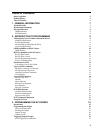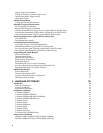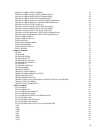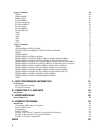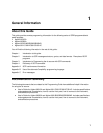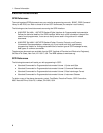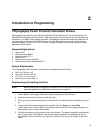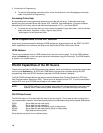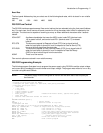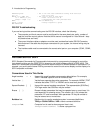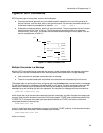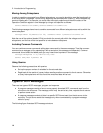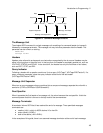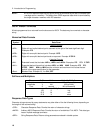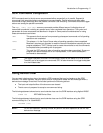
Introduction to Programming - 2
11
Baud Rate
The front panel Address key lets you select one of the following baud rates, which is stored in non-volatile
memory:
300 600 1200 2400 4800 9600
RS-232 Flow Control
The RS-232 interface supports several flow control options that are selected using the front panel Address
key. For each case, the dc source will send a maximum of five characters after holdoff is asserted by the
controller. The dc source is capable of receiving as many as fifteen additional characters after it asserts
holdoff.
XON-XOFF A software handshake that uses the ASCII control code DC3 (decimal code
19) to assert hold-off, and control code DC1 (decimal code 17) to release
hold-off.
RTS-CTS The dc source asserts its Request to Send (RTS) line to signal hold-off
when its input buffer is almost full, and it interprets its Clear to Send (CTS)
line as a hold-off signal from the controller.
DTR-DSR The dc source asserts its Data Terminal Ready (DTR) line to signal hold-off
when its input buffer is almost full, and it interprets its Data Set Ready
(DSR) line as a hold-off signal from the controller.
NONE There is no flow control.
Flow control options are stored in non-volatile memory.
RS-232 Programming Example
The following program illustrates how to program the power supply using RS-232 to set the output voltage
and current and to readback the model number and output voltage. The program was written to run on any
controller using Microsoft QBasic.
NOTE: The power supply must be configured for RS232 and the same baud rate and parity as
the controller.
‘ Program to write and read via RS232.
‘ Configure the power supply for 9600 baud, even parity and RS232
‘ Configure serial port for:”
‘ 9600 baud
‘ 7 bit data
‘ 2 stop bits
‘ Ignore request to send
‘ Ignore carrier detect
‘ Even parity ‘ Needed with Vectra basic, ignored with QBasic
‘ Send line feed
‘ Reserve 1000 character buffer for serial I/O
‘
DECLARE FUNCTION gets$ ()
CLS ‘ Clears screen
LOCATE 1, 1 ‘ Position curser at top left
‘ Configure Com Port
OPEN “com1:9600,e,7,2,rs,cd,pe,lf” FOR RANDOM AS #1 LEN = 1000
PRINT #1, “OUTPUT ON” ‘ Turn on output then set voltage and current
PRINT #1, “VOLT 6” ‘ Set voltage to 6 volts
PRINT #1, “CURR .5” ‘ Set current to 0.5 amps
PRINT #1, “*IDN?” ‘ Query the power supply identification string
PRINT gets$ ‘ Go to gets$ Function and print data returned
PRINT #1, MEAS”VOLT?”; volt ‘ Query the power supply voltage
Volt = VAL (gets$) ‘ Convert gets$ string to a value
PRINT gets$ ‘ Print the value of the voltage
END ‘ End of main program



